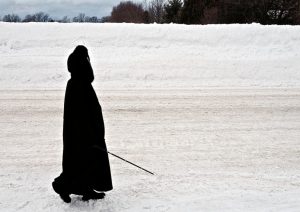❄️ Snow storms can be dangerous and disruptive. Here are some things to keep in mind about how snow affects people who are blind or have low vision. ❄️
Snow muffles the sounds of things, which can make orientation difficult to persons who are blind or have significant low vision, as they rely on echoes and other sounds to orient themselves to their surroundings. Thus, crossing a street can be challenging because it’s harder to hear sounds of traffic.
Snow interferes with information from white canes – it’s difficult, if not impossible, for cane users to know where they are when the streets are snow covered, as edges of sidewalk and other cues are not readily available.
Snow and ice also cause challenges for people using guide dogs. Salt, although great for getting rid of ice, can hurt a dogs paws, and guide dog owners must take extra precautions to protect their four-legged companions.
How to stay safe if you must go out in the snow:
• take precaution and walk at a slower pace;
• don’t hesitate to ask for help from those nearby;
• bundle up;
• consider alternative methods of transportation such as taxi services.
Stay warm, and safe travels to everyone!


